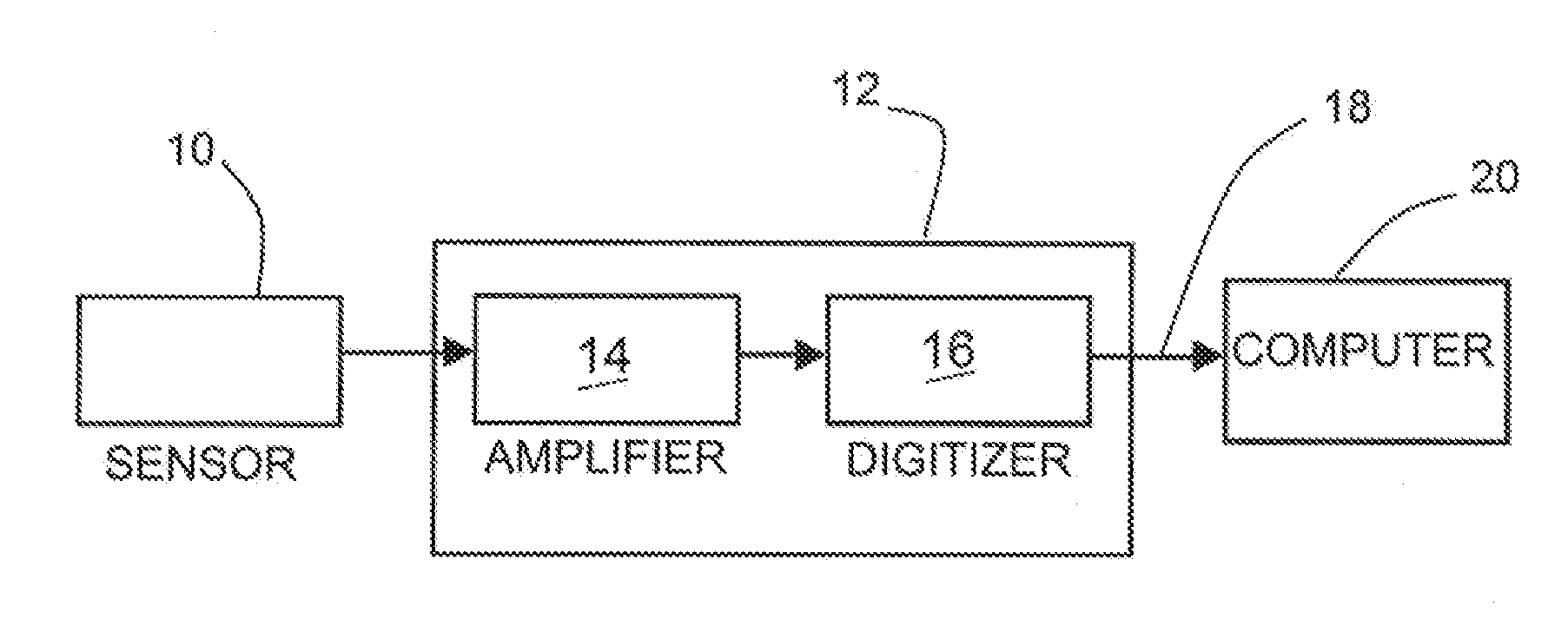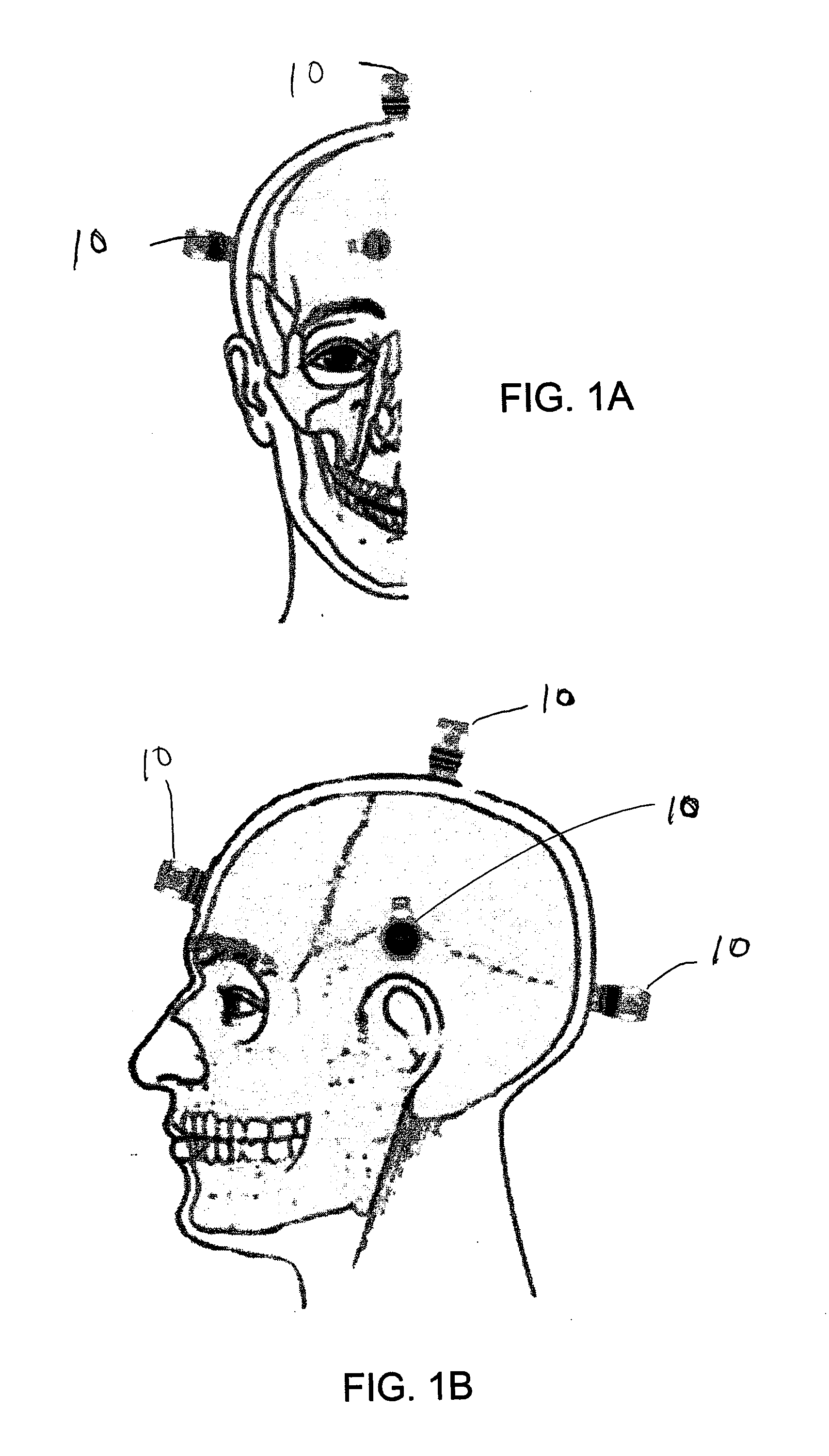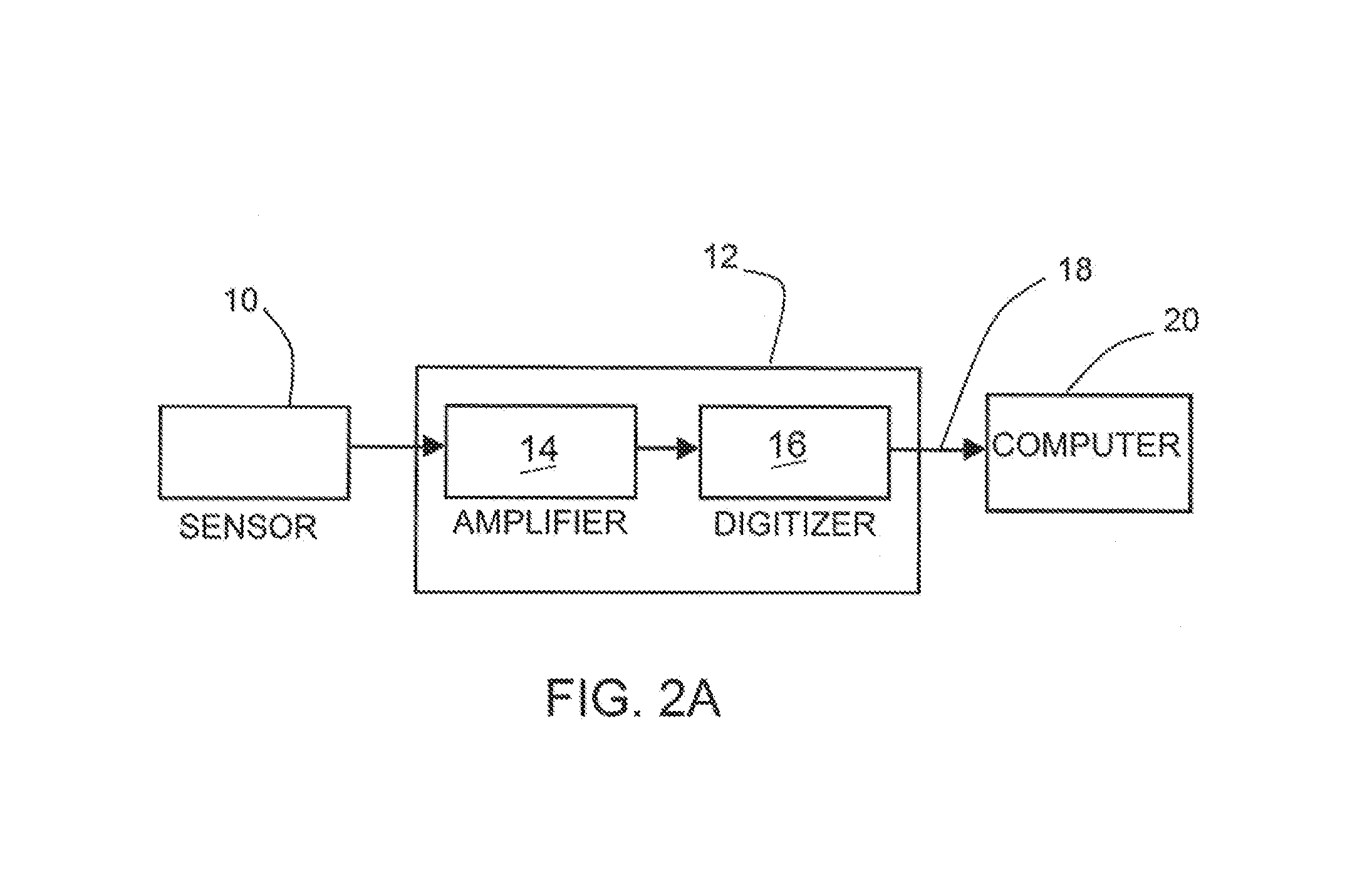Detection of Concussion Using Cranial Accelerometry
a technology of cranial accelerometer and detection of concussion, which is applied in the field of noninvasive detection of brain anomalies, can solve the problems of persistent tbi, vastly under-reported, and never resolved
- Summary
- Abstract
- Description
- Claims
- Application Information
AI Technical Summary
Benefits of technology
Problems solved by technology
Method used
Image
Examples
Embodiment Construction
[0034]Preferred embodiments of the invention are explained below in terms of system components and tests that have been performed. Initial discussion is in regard to testing performed to identify a specific pattern indication of concussion using cranial accelerometry (phase 1), to test the identified pattern against blinded data to verify its efficacy in detecting concussion (phase 2).
[0035]In all testing, subjects had accelerometry measurements and concurrent two-lead electrocardiograms. In players with a concussion, multiple sequential measurements were obtained. Sport Concussion Assessment Tool 2 was used to assist clinical determination of concussion.
[0036]As explained in greater detail below, phase 1 was the process whereby accelerometry data indicative of a concussion pattern were determined, and phase 2 was evaluation of these findings against a blinded set of accelerometry data.
[0037]The following explanation pertains to methods used to acquire data for both phases 1 and 2.
A...
PUM
 Login to View More
Login to View More Abstract
Description
Claims
Application Information
 Login to View More
Login to View More - R&D
- Intellectual Property
- Life Sciences
- Materials
- Tech Scout
- Unparalleled Data Quality
- Higher Quality Content
- 60% Fewer Hallucinations
Browse by: Latest US Patents, China's latest patents, Technical Efficacy Thesaurus, Application Domain, Technology Topic, Popular Technical Reports.
© 2025 PatSnap. All rights reserved.Legal|Privacy policy|Modern Slavery Act Transparency Statement|Sitemap|About US| Contact US: help@patsnap.com



